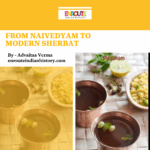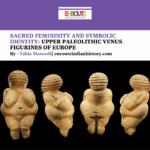Article Written By EIH Subject Matter Expert
Dr. Sonika Sandhu
The mighty beasts of the Triassic and Jurassic- The Dinosaurs, would have never envisaged that their future would culminate in not such a terrifying being and one that would be preyed upon mammals- The Chicken.
Today they are the most common and widespread domestic animals, totaling a population of 23.7 billion as of 2018. This gregarious bird is native to India and parts of south east Asia. It is accepted that from ancient India the chicken spread to Eastern Mediterranean. They appear in ancient Egypt in the mid-15th century BC, and is associated with the saying “bird that gives birth every day” having come from the land between Syria and Shinar, Babylonia, according to the annals of Thutmose III. By 5th century BCE they are even reported from Ancient Greece. Even though the Chicken arose and evolved in India and parts of South East Asia such as Thailand, in its homeland only four breeds are present- Aseel, Chittagong, Kadaknath and Busra.
The Aseel has multiple varieties such as Peela (Golden red), Yakub (Black and red), Nuri (White), Kagar (Black), Chitta (Black and white spotted), Java (Black), Sabja (White and golden or black with yellow or silver), Teekar (brown) and Reza (light red). It is noted for pugnacity, high stamina, majestic gait and dogged fighting qualities.
The Chittagong is also known as the Malay, is a dual purpose bird. The popular varieties are buff, white, black, dark brown and grey.
An interesting breed is the Kadaknath. The skin, beak, shanks, toes and soles of have a distinctive slate-like in colour, Even the Comb, wattles and tongue are purple. Black from outside and black from within, Most of the internal organs show intense black colouration and varying degrees of black colour are seen in the skeletal muscles, tendons, nerves, brain etc. The black pigment is due to the deposition of melanin.
The last variety is the Busra, this is a medium sized bird and is deep bodied and light feathered alert in nature. It is a poor layer and is not reared for poultry.
It is interesting to note that even today the native breeds have a higher cultural value than the improved and exotic breeds imported from outside. These desi chickens form an important part of many rituals and ceremonies of the indigenous tribes and people of the sub-continent. Tracing its cultural history, in Hindu mythology the rooster is depicted as the vahana (vehicle) of the goddess Aditi/Bahuchara Mata, the mother of all gods and the creator and guardian of all life. The Flag of Lord Murugan also depicts a Rooster. This rooster symbolizes the dawn of wisdom and conquest breaking over the forces of ignorance. A rooster also adorns the war flag of Srikhandi . In the Ramayana Lord Ram bestows upon the rooster Golden crown for leading him to Ravan’s castle.
Chicken form an important part of many agrarian festivals. They are sacrificed before the start of agricultural season, before venturing into new business, as part of birth and death ceremonies, festivals, games, and sporting events; and in traditional medicine, witchcraft, and black magic. For these there are specific breeds which are preferred: for example the vittanala panduga (seed festival) of Andhra Pradesh is celebrated in the month of March-April, for this the seeds of entire village are pooled together and blood of sacrificed chicken is smeared on them. These seeds are then distributed amongst all members. The Hunting weapon festival
itukula panduga , celebrated anytime from the second half of April to the first half of May, also involves sacrificing a chicken. Native chicken eggs are offered to weapons on the third day, following which all the men of the village leave for hunting in the forest. Upon returning after a week of hunting, erra or pandra kodi (red chicken) will be sacrificed if the hunt was successful. Interestingly not only festivals some communities have incorporated the chicken into its birth rites. When an Indigenous woman conceives, the family vows to sacrifice a black chicken if she has a safe labour and gives birth to a healthy baby. A black chicken also will be sacrificed when the women enters seven months into pregnancy and about three to four days before she enters labour, to ensure a safe delivery. When a healthy baby is born a black chicken is duly sacrificed, as is a red chicken on the day when the umbilical cord stump falls off the new-born. All is not holy when it comes to the chicken, amongst certain communities the meat and eggs of white chicken are never offered to children below the age of 10, . It is believed that if such kids eat white chicken then they are likely to be hit by lightning or possessed by evil spirits or fall victim to black magic.
Today they form an important part of our cuisine, from Chicken Tikka masala to the homestyle chicken curry and the ever reminder of “ Sunday ho ya Monday roz Khao Ande” they are an integral part of the history and culture of this land.

















